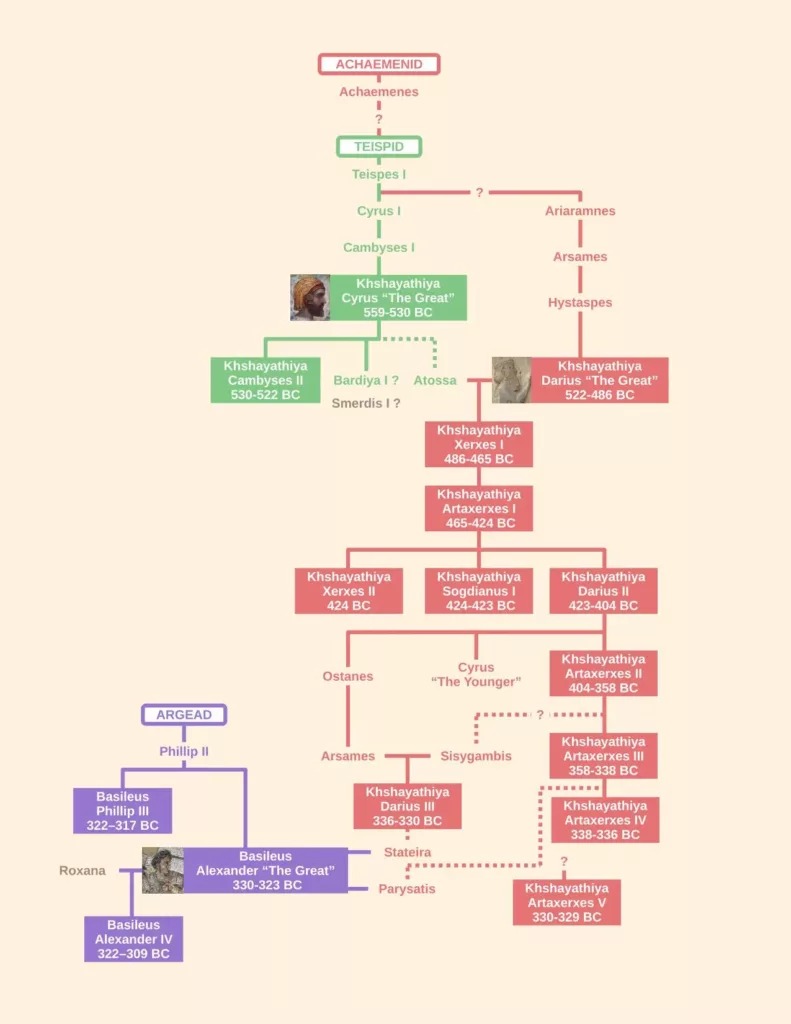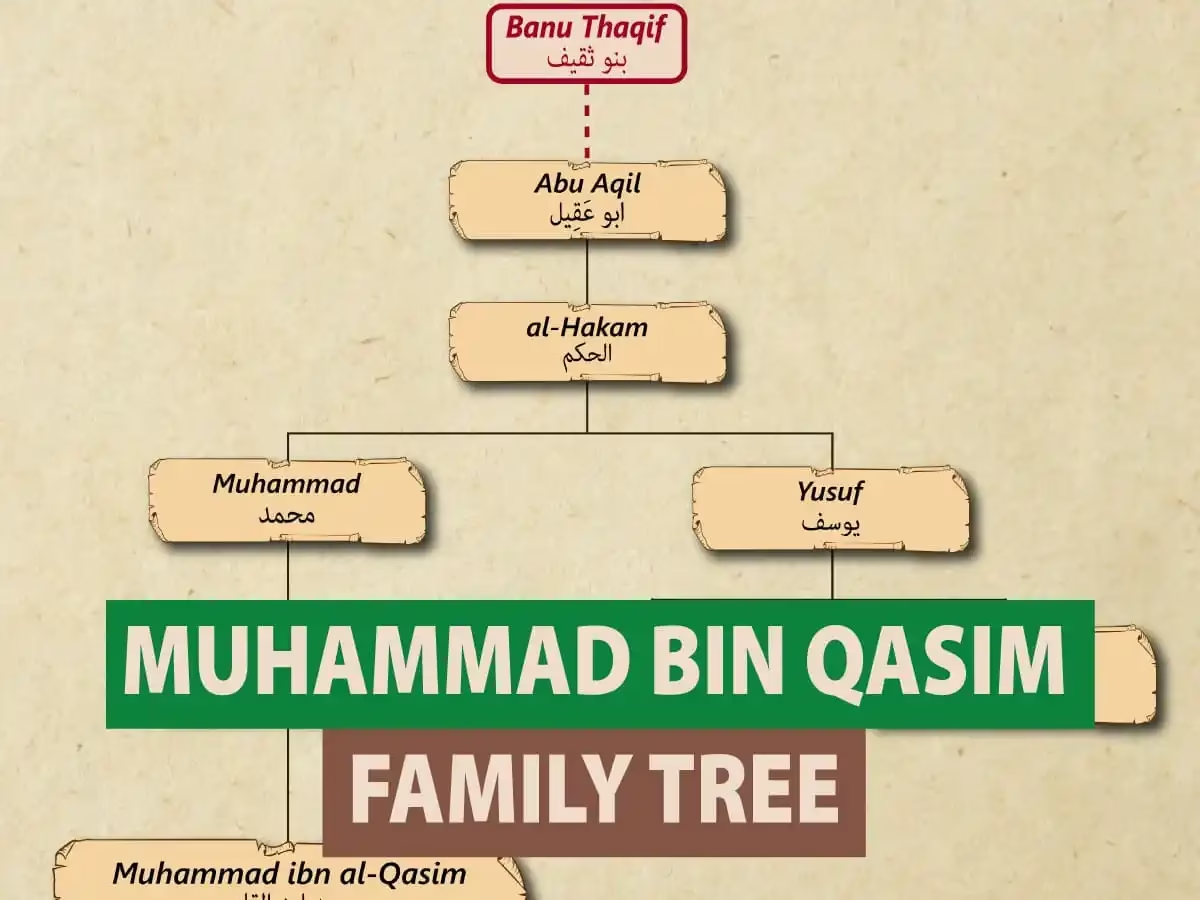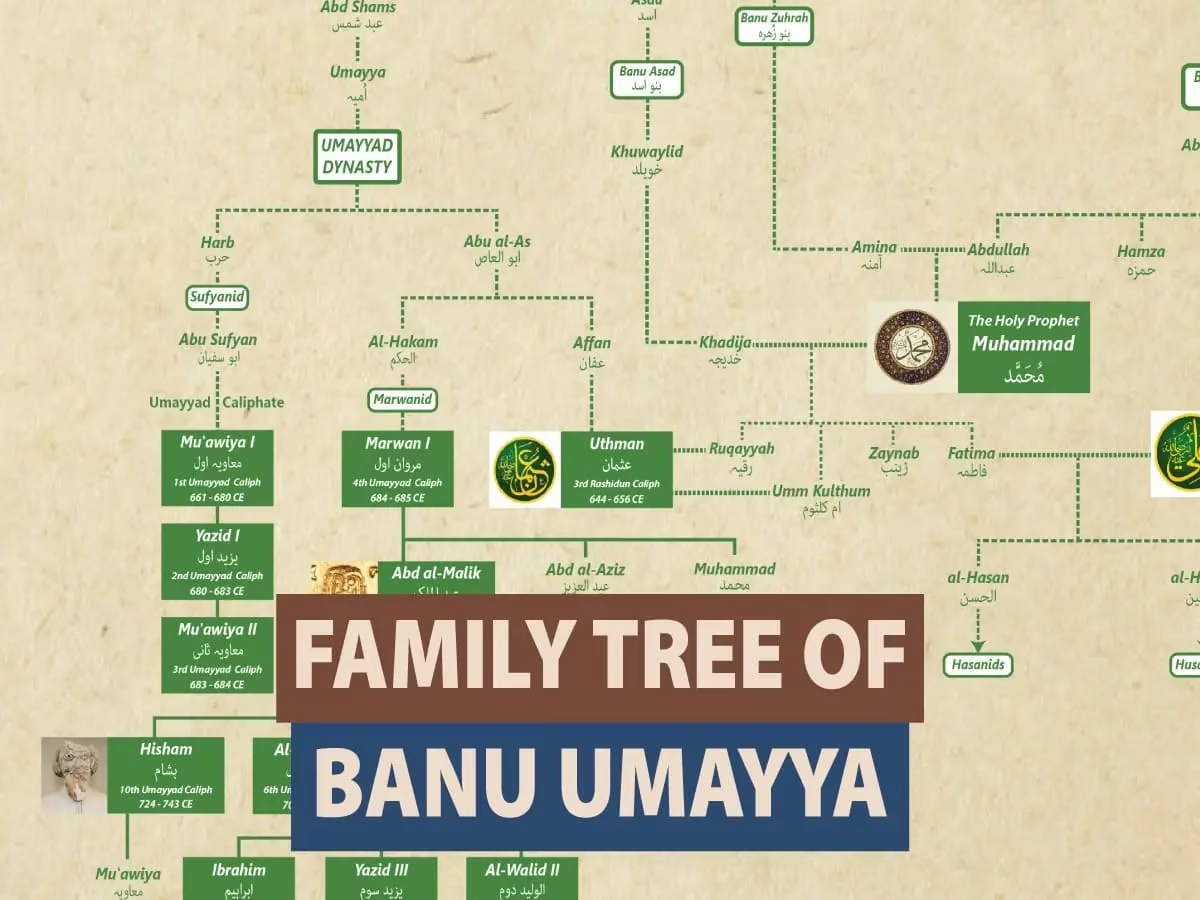The Achaemenid Dynasty, often known as the First Persian Empire, was one of the most influential and expansive empires in world history. Founded in the 6th century BC, it stretched from the Indus Valley in the east to Greece and Egypt in the west. The family tree of the Achaemenid rulers reveals a fascinating lineage of kings, conquerors, and dynastic marriages that shaped ancient Persia’s destiny — from Cyrus the Great to Darius III, the last Persian king defeated by Alexander the Great.

The Founder: Achaemenes and the Teispid Line
The dynasty traces its name to Achaemenes, a semi-legendary figure who ruled the region of Anshan (in modern-day Iran) around the 7th century BC. His descendants, known as the Teispid branch, established the foundation of the Persian royal house.
From Achaemenes came Teispes I, who extended Persian influence and fathered two lines:
- One that led to Cyrus I and Cambyses I, and ultimately Cyrus the Great.
- Another that descended through Ariaramnes and Arsames, leading to Darius I.
Thus, two main branches — the Teispid line (of Cyrus) and the Ariaramnid line (of Darius) — merged to form the imperial family of Persia.
Cyrus the Great: The Empire Builder (559–530 BC)
At the heart of the dynasty stands Khshayathiya Cyrus II, better known as Cyrus the Great. He united the Persian tribes, overthrew the Medes, and built an empire stretching from the Aegean Sea to the Indus River. Cyrus is remembered not only as a conqueror but also as a visionary ruler who respected local customs and religions — famously recorded on the Cyrus Cylinder, often regarded as the world’s first charter of human rights.
Cyrus had several children, including:
- Cambyses II, who succeeded him.
- Atossa, who married Darius the Great, linking the two royal lines.
- Possibly Bardiya (Smerdis), whose identity became the subject of a royal controversy after Cyrus’s death.
Cambyses II and the Expansion into Egypt (530–522 BC)
Cyrus’s son, Khshayathiya Cambyses II, continued his father’s conquests and added Egypt to the Persian Empire after defeating Pharaoh Psamtik III. His sudden death during a campaign led to political turmoil, paving the way for the rise of Darius I — a distant cousin from the Ariaramnid line.
Darius I “The Great” (522–486 BC): Reformer and Empire Organizer
Darius I, husband of Atossa, established a new ruling branch within the Achaemenid family. A master administrator, he reorganized the empire into satrapies (provinces), introduced a unified currency, and completed monumental projects such as Persepolis.
He also attempted to expand into Greece, beginning the Greco-Persian Wars that would define the later generations of Achaemenid rulers.
The Successors: Xerxes to Artaxerxes
After Darius, the throne passed to his son Khshayathiya Xerxes I (486–465 BC) — known for leading the massive invasion of Greece, including the famous battles of Thermopylae and Salamis. Though ultimately unsuccessful in Greece, Xerxes maintained the empire’s dominance in Asia.
Xerxes was succeeded by a series of kings:
- Artaxerxes I (465–424 BC)
- Xerxes II and Sogdianus (424–423 BC) — brief rulers during a time of internal strife.
- Darius II (423–404 BC) — who stabilized the empire but faced revolts and growing Greek influence.
The Later Kings: Decline of the Achaemenids
The later rulers, including Artaxerxes II (404–358 BC) and Artaxerxes III (358–338 BC), oversaw both internal consolidation and renewed conflicts with Egypt and Greece.
However, by the time of Artaxerxes IV (338–336 BC) and Darius III (336–330 BC), the once-great empire was weakening due to corruption, revolts, and external threats.
Darius III and the End of the Achaemenid Empire
The last great king, Khshayathiya Darius III, ascended the throne just as a new power was rising in the west — Macedon, under Alexander the Great. Despite courageous efforts at battles such as Issus and Gaugamela, Darius III was ultimately defeated.

In 330 BC, the Achaemenid Empire fell, marking the end of over two centuries of Persian rule.
Through marriage alliances, Alexander linked himself to the Achaemenid line — marrying Stateira, Darius III’s daughter — symbolically uniting the Greek and Persian worlds.
Legacy of the Achaemenids
The Achaemenid rulers left an enduring legacy:
- Administrative efficiency that influenced later empires, including Rome.
- Cultural tolerance, allowing diverse peoples to coexist peacefully.
- Architectural marvels like Persepolis, Pasargadae, and Susa.
Their family tree tells the story of dynastic continuity, imperial vision, and eventual decline, but their influence remains embedded in world history.



